Growing tomatoes: an expert guide
Enjoy success in growing tomatoes with this ultimate guide, including the best ways to grow tomato plants and varieties to try

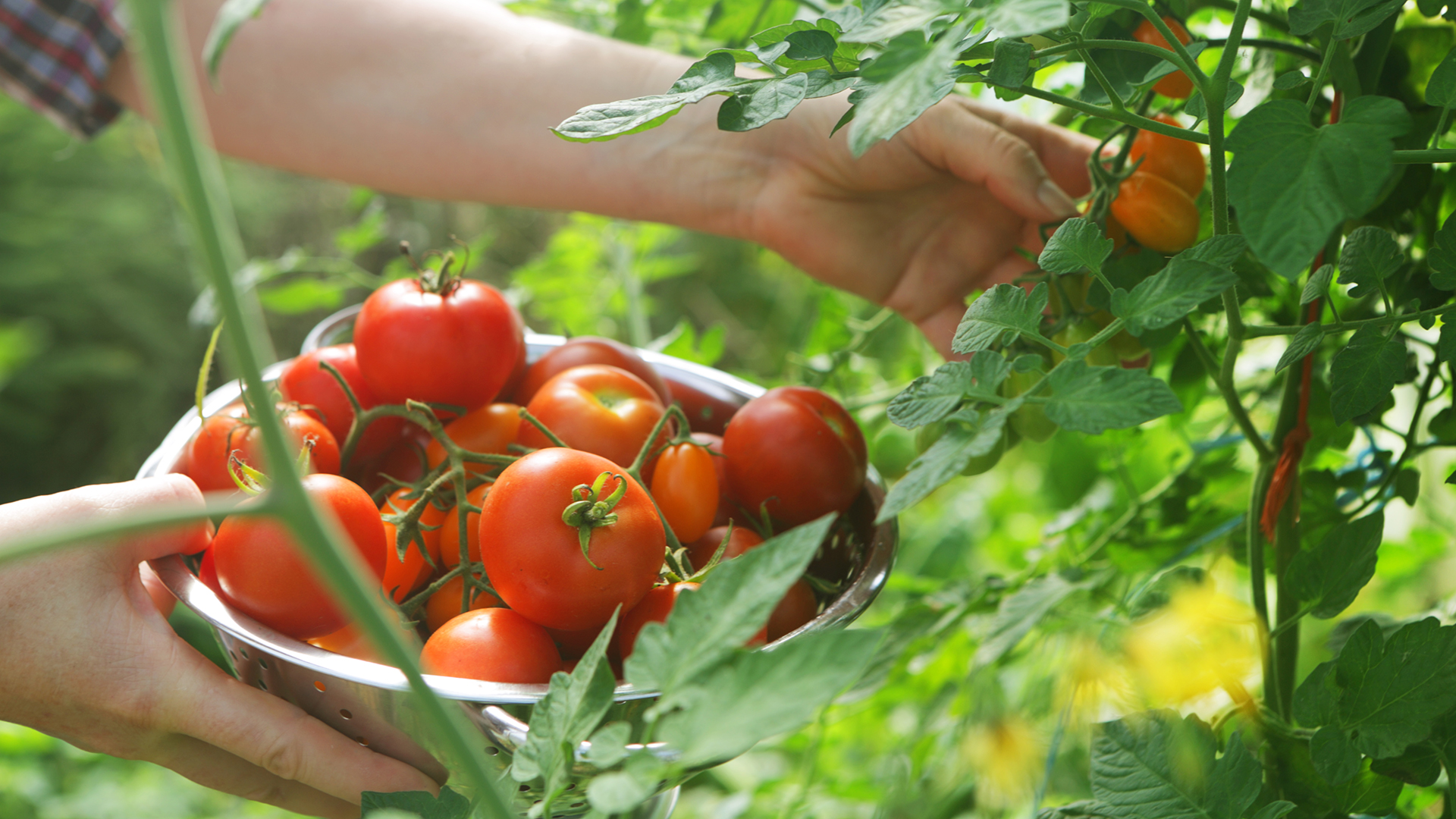
Once you have become a convert to growing tomatoes, you'll never look back – we guarantee it. Tomatoes are still the pick of the crop with a lot of gardeners because nothing beats picking and eating a fully ripened tomato from your own plant.
The taste of the homegrown fruit far exceeds that of any you will buy at the grocery store. Ripened on the vine, your own crop will be positively bursting with sweetness and flavor.
Spring is the perfect time to start growing tomatoes from seed, and with a huge variety to choose from, you'll be spoilt for choice. So use this simple guide to grow tomatoes effortlessly – and add them to the list of mouth-watering kitchen garden ideas you're writing.
How to grow tomatoes
Growing tomatoes is simple, and just a few plants will provide you with lots of fruit for the myriad recipes they can be added to – or just for eating freshly picked and still warm from the sun.
There are two main varieties and ways of growing tomatoes:
- Bush (determinate) varieties of tomato are shorter and don't require staking or side-shooting. Bush plants are good for pots or hanging baskets.
- Cordon (indeterminate) - also know as vine tomatoes - varieties must always be grown with a support system as they grow tall, reaching up to 6ft, and require side-shooting - they need their side shoots pinching out. Cordon tomatoes are good for where space is more limited as they grow vertically.
'It is important to choose between bush type varieties of tomato and cordon types,' says Simon Crawford, breeder at seed specialists Burpee Europe, as this will impact on how the plants are grown and maintained, and when fruits ripen.
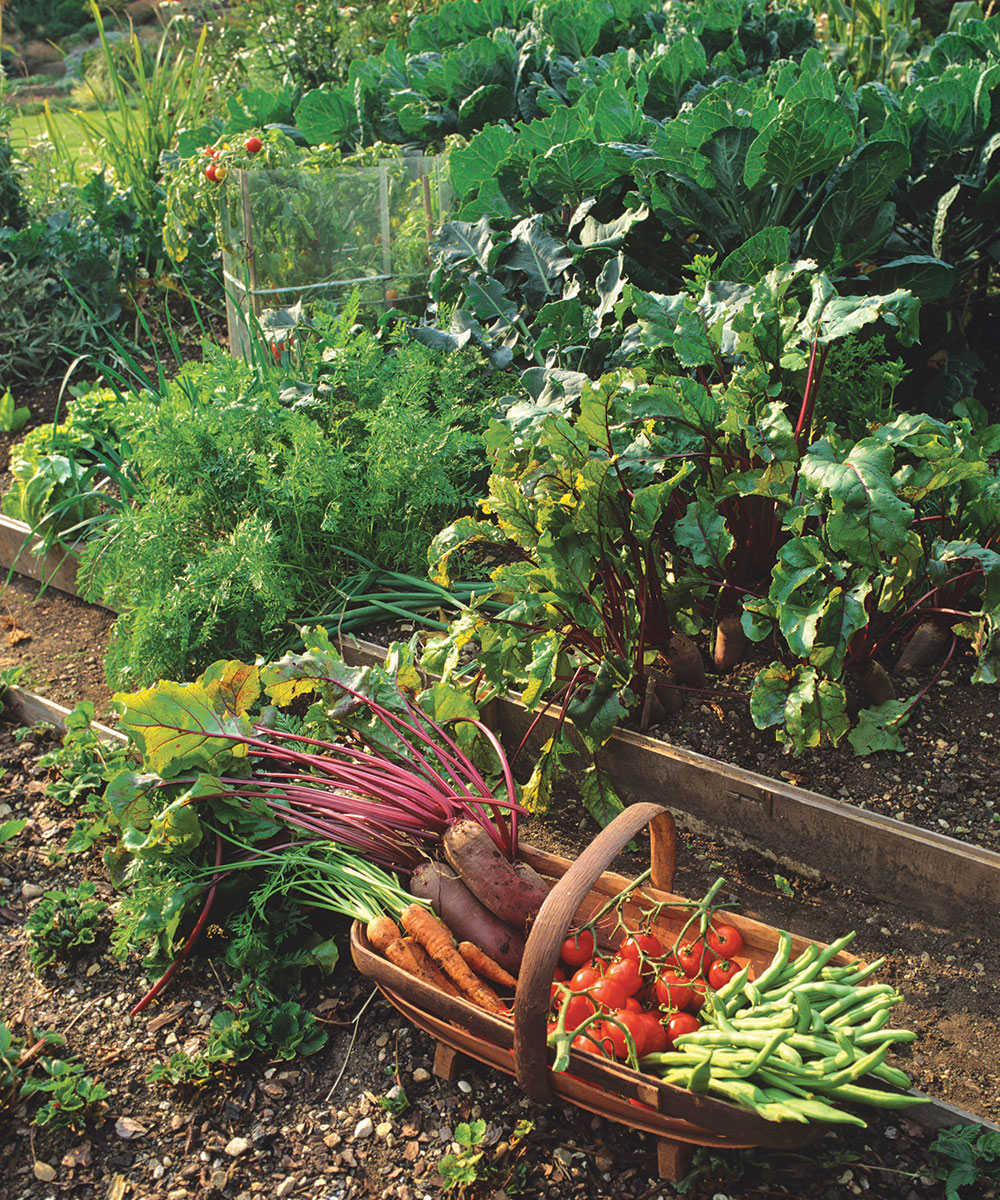
'Compact bush types are easier to maintain and usually have concentrated ripening over a few weeks. Cordon tomatoes require more maintenance, but produce ripe fruit over a longer period,' Simon adds.
Design expertise in your inbox – from inspiring decorating ideas and beautiful celebrity homes to practical gardening advice and shopping round-ups.
TOP TIP: Always check the seed packet or plant label to check which variety of tomatoes they are, and that you will have the space to grow them.
'We recommend cherry varieties for beginners growing tomatoes, as large varieties like plum and beefsteak are trickier,' says Jill Vaughan of Defland Nurseries Ltd, a member of the British Tomato Growers’ Association.
There are a number of different options for growing tomatoes, whether in the ground, pots or growbags, indoors or outside, and either from seed or small plants that can be bought from garden nurseries in spring.
Growing tomatoes from seed
Growing tomatoes from seed is the most cost-effective method of growing your own crop. You will need small pots or clean seed trays at least 1in (3cm) deep.
- Fill the pots/trays with good quality seed compost and make sure the surface is level and firm. 'Plants in the Nightshade family - which includes tomatoes - prefer growing in soil that is more acidic,' advises Mark Macdonald of West Coast Seeds.
- Sow the seeds about 1in (3cm) apart and cover with a light sprinkling of compost
- Water using a watering can with a fine rose.
- Place in a propagator or cover with clear plastic or a sheet of glass and put them somewhere warm to germinate such as a warm windowsill - keeping them at around 64°F (18°C) to 77°F (25°C) is ideal.
- Remove the lid once the plants have germinated to help prevent the plants ‘damping off’, advises a horti expert at seed suppliers Dobies.
- Transplant into 3½in (9cm) pots when two 'true' leaves have formed - leaves formed after the first pair, which will be after approximately 14 days.
- TOP TIP: 'Watering the seedlings first will make it easier to pry them apart. Holding plants by a leaf will prevent your fingers damaging the stems,' says the Dobies' horti expert.
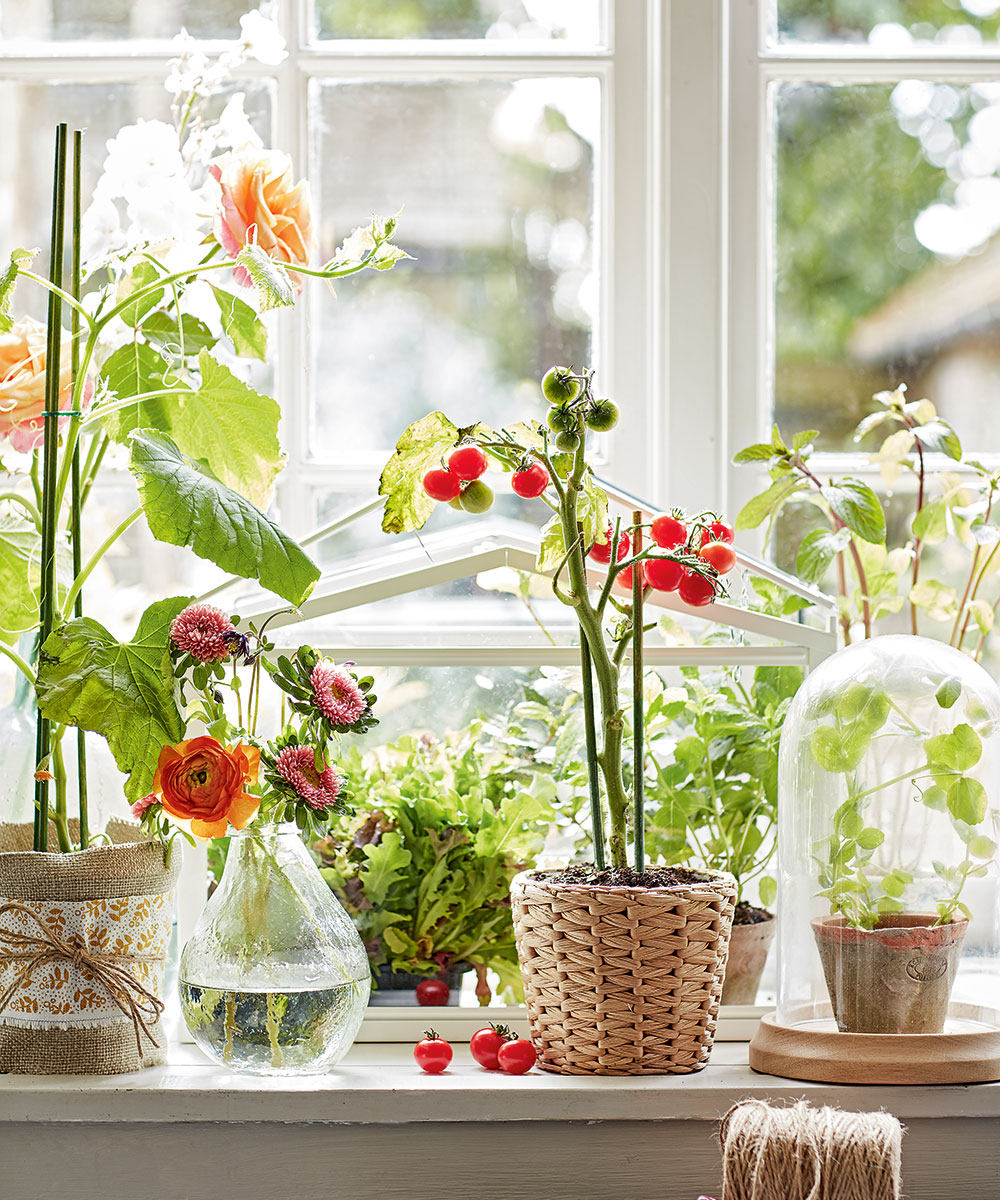
'We recommend that you always sow about 25 per cent more seeds than you want plants, to allow for some losses and so you can select the strongest seedlings,' says Jill Vaughan.
When the flowers of the first truss - or stem - are beginning to open, transfer the tomato plants to 9in (23cm) pots or growing bags, or plant outside in a warm sunny spot, spaced 18–24in (45–60cm) apart.
'Tomatoes are hungry and thirsty plants, so to maximise their nutrient and water uptake always set tomato plants deep in their pots, growbags or soil,' advises Kris Collins, nursery manager at seed experts Thompson & Morgan.
If you are growing tomatoes outdoors, acclimatize them first once the night become frost free by hardening them off. This is done by gradually introducing them to different temperatures and weather conditions by moving them outside during the day and then in at night, over the course of 2 to 3 weeks. It will prevent the shock of a change in conditions causing the tomatoes to slow or stop growing.
Growing tomatoes in planters
If you are looking for small vegetable garden ideas, 'tomatoes are excellent for growing in containers, as long as you place them in a spot that gets plenty of sun. Keep them in a conservatory or on a sunny windowsill until they are ready to place outside,' says Jill Vaughan.
Follow the method for growing them from seed. Compact, bushy varieties are good for growing in pots and will spill over the sides of the container. Cordon varieties will need to be staked to keep them supported as they grow.
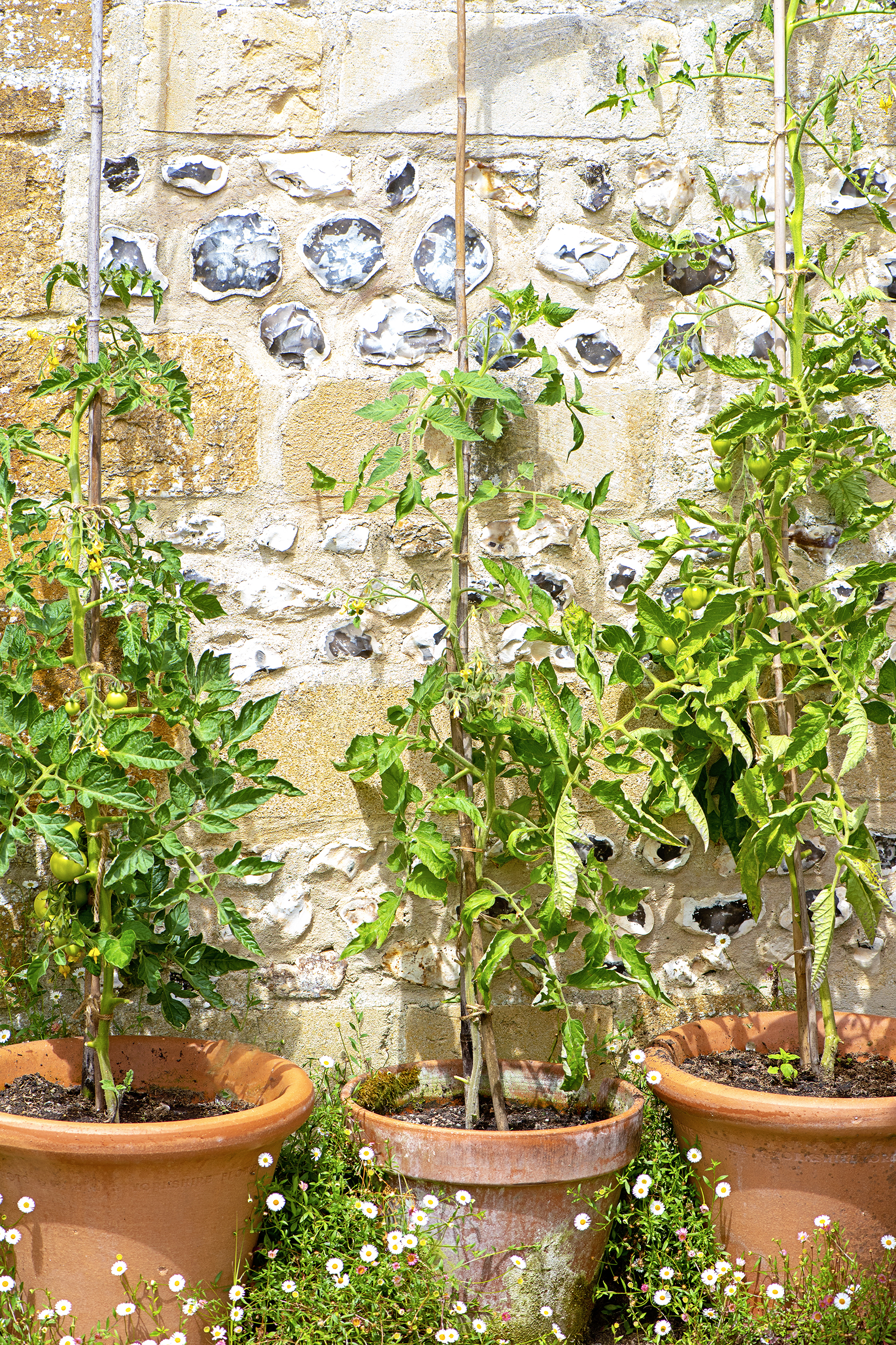
Choose a large container so that it is easier to look after the plants. Each tomato plant ideally needs at least a 12 in (30cm) pot, or be spaced about 15in (35 cm) apart in a deep trough.
'You can also grow tumbling varieties, such as cherry tomatoes in hanging baskets, and these are perfect for balconies and patios,' says Jill Vaughan.
If growing tomatoes in pots, planters, or hanging baskets you will need to add liquid feed about once every 1-2 weeks, and water regularly to keep the compost moist – which can be at least once a day in hot weather when the plants grow larger.
Growing tomatoes in grow bags
Growbags are a popular choice for growing tomatoes, offering both the space the plants need to grow well, but also the flexibility to be placed in the sunniest, sheltered spot for optimum growing conditions.
Cut out holes in the growbags to accommodate the tomato plants, and also remember to make slits in the base of the growbags for drainage.
Plant out the young seedlings that you have grown indoors, or bought from the garden nursery, once the last frosts have passed - usually about mid May, but this can vary from area to area.
Set the tomato plants deep in the growbags. 'By burying the plant stem up to the first leaf set you will encourage lots more feeder roots to grow from the stem below, leading to bigger and better yields to pick through the season,' says Kris Collins.
When is the best month to plant tomatoes
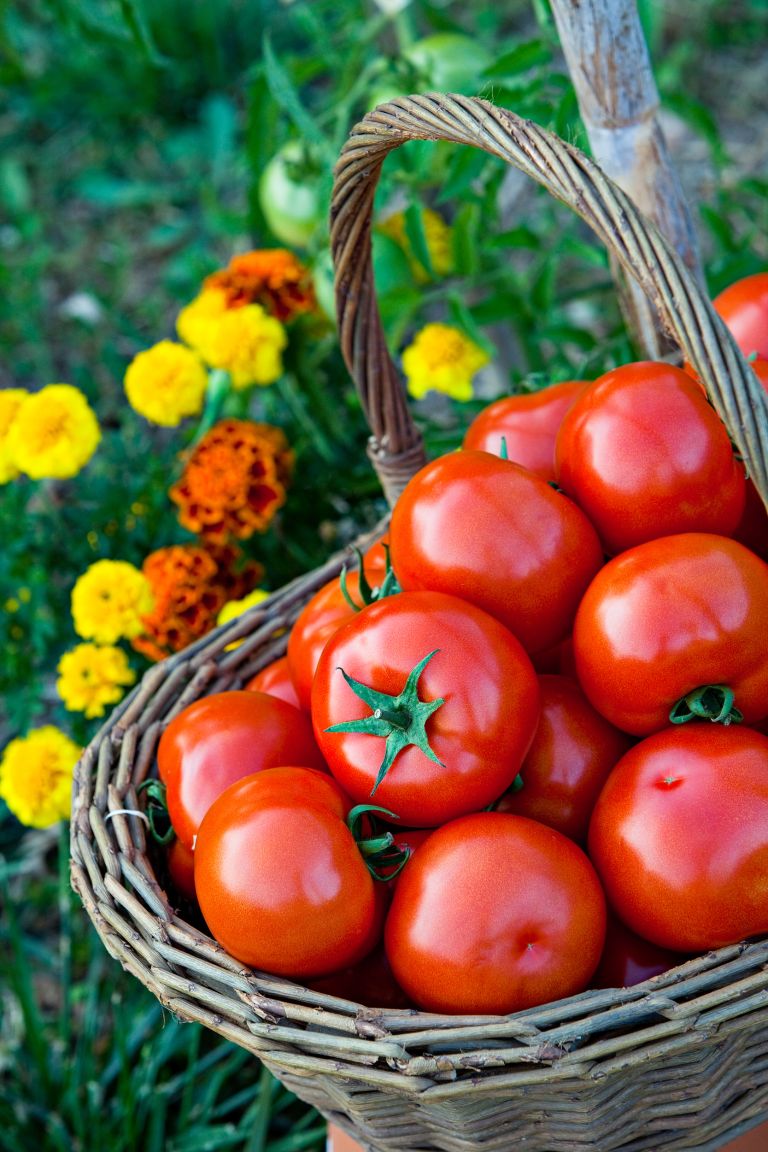
If you want to know when to plant tomatoes, it's important to know that it depends on where you live and the weather conditions; the general rule, though, is to remember that tomatoes are warm weather plants and will not grow in temperatures below 50°F (10°C). The soil should also be ideally at 60°F (16°C).
How to take care of tomato plants

The care your tomatoes will need varies slightly depending on the variety you are growing.
- Train cordon varieties up bamboo canes, frames or vertical string.
- Regularly pruning tomato plants – pinching side shoots that sprout from between a leaf and the main stem on cordon varieties. 'In order to maximize your crop, you need to remove the 'suckers' or side shoots, which grow diagonally between the leaf and main stem, as well as competing lead stems. Left to their own devices, your tomato plants will put all their energy into growing greenery, rather than precious fruit. You just want one strong main stem, so check regularly. You can start pinching out when the plants reach four to six inches in height,' advises Period Living editor, Melanie Griffiths.
- Remove the growing point of the main stem when tomato plants reach the top of the growing support in the case of cordon varieties, or have grown seven fruit trusses indoors, or four trusses outdoors for bush varieties - remove at two leaves above the top truss.
- Don't train or pinch out bush and basket varieties as these can be left to grow.
- Water the plants in well to settle the soil around the roots. Thereafter you need to adjust the watering according to the size of the plants and the weather.
- Stages of watering - 'giving plants a thorough watering rather than frequent light sprinklings will encourage deep rooting in the early stages, but once the fruits begin to ripen you want to maintain an even moisture as erratic watering can cause fruit to split,' advises Jill Vaughan.
- Apply a liquid tomato feed about every 2 weeks, changing to a high potash feed once the first fruits start to form. Either purchase feeds designed for tomatoes or make your own tomato fertilizer, such as a comfrey feed or nettle tea.
- Trying beefsteak varieties? 'To encourage the biggest tomatoes from your plants, thin out each flower cluster to just 4 fruits after setting. This will lead to fewer but much bigger tomatoes from the plant,' advises Kris Collins.
- Discover the best tomato companion plants to deter tomato pests.
- Adopt tomato blight treatments to ensure a healthy crop
- Consider companion planting your tomato plants near flowers that are known to attract beneficial predatory insects that will help to control populations of pest insects, or deter those pests, such as French Marigolds and petunias. You can find out more about tomato companion planting in our guide.
- Don’t cut fruit from the plant as this can encourage tomato diseases. 'While holding the fruit, push the ‘elbow’ joint just above it, and the fruit and its stem should come away in your hand,' advises Dobies.
- Cover plants with horticultural fleece on any unexpectedly cold nights.
- Later in the season, help tomatoes along by removing any flowers and tiny fruits that have no chance of ripening in time. 'Also remove excess leaves to allow as much sunlight as possible to get to the tomatoes,' advises Melanie Griffiths.
- Harvest fruit when it is fully red in colour. Allowing the fruits to ripen on the vine before harvesting tomatoes will produce more depth of flavour – with the exception of cherry tomatoes which are best picked just before they are fully ripe as otherwise they tend to crack.
- Bring plants indoors at the end of the season when it gets too cold for half-ripened tomatoes to finish ripening on the trusses. 'A mistake I made in my early tomato-growing experiences was leaving them on the plant too long after summer had ended. I had so many plump, half-ripened tomatoes, which ended up rotting on the vine,' says Melanie.
How to grow tomatoes from tomatoes

You can also try growing tomatoes from the seeds of fresh tomatoes. Remove the seeds from a ripe tomato and soak them for 14 hours in water. Dry them on a paper towel and then plant them within seven days.
You can grow tomatoes this way using the same method as growing from nursery supplied seeds.
Is it better to grow tomatoes indoors or outdoors?
Tomatoes can be grown outdoors or indoors, but because they are warm weather plants you need to ensure that they are grown in frost free conditions. This is why they are well suited to growing in a greenhouse or conservatory.
'For those gardeners who lack a greenhouse or polythene tunnel, growing tomatoes outdoors is the only option and this can present a particular set of issues, not least of which is tomato blight,' says Simon Crawford of Burpee.
Blight is among the most devastating diseases affecting outdoor tomatoes. It attacks the foliage and fruits, causing rotting, and is most common in wet weather. 'There are no chemical controls for it available to the home gardener, so two other key methods to control the disease are environmental management and the use of resistant varieties,' adds Simon.
Many modern tomato varieties, however, have made growing tomatoes outdoors easier though because of earlier ripening and improved disease resistance.
Rachel is senior content editor, and writes gardening content for homesandgardens.com, Homes & Gardens magazine, and its sister titles Period Living Magazine and Country Homes & Interiors. She has written for lifestyle magazines for many years, with a particular focus on gardening, historic houses and arts and crafts, but started out her journalism career in BBC radio, where she enjoyed reporting on and writing programme scripts for all manner of stories. Rachel then moved into regional lifestyle magazines, where the topics she wrote about, and people she interviewed, were as varied and eclectic as they were on radio. Always harboring a passion for homes and gardens, she jumped at the opportunity to work on The English Home and The English Garden magazines for a number of years, before joining the Period Living team.
